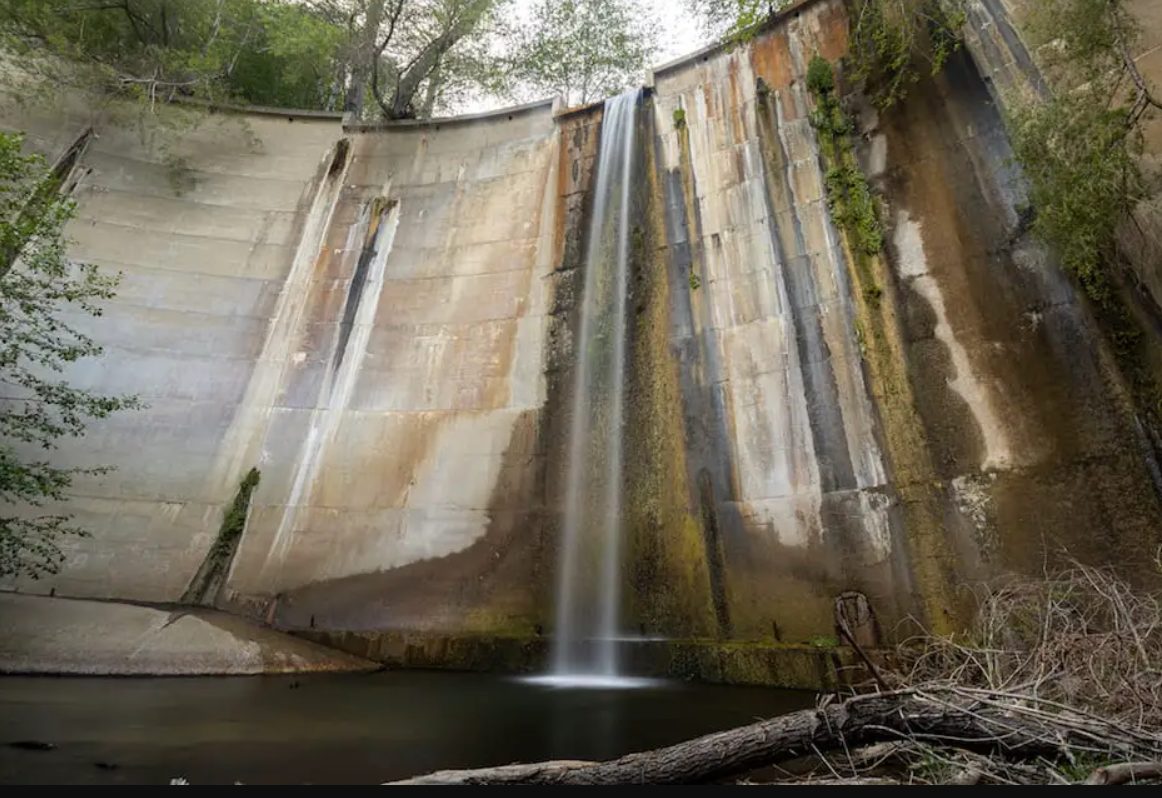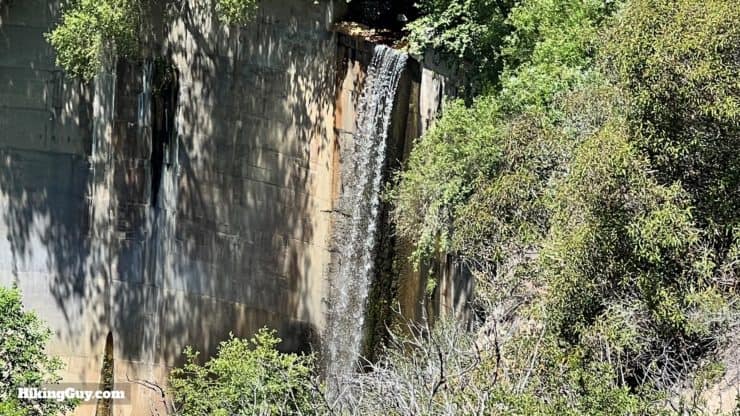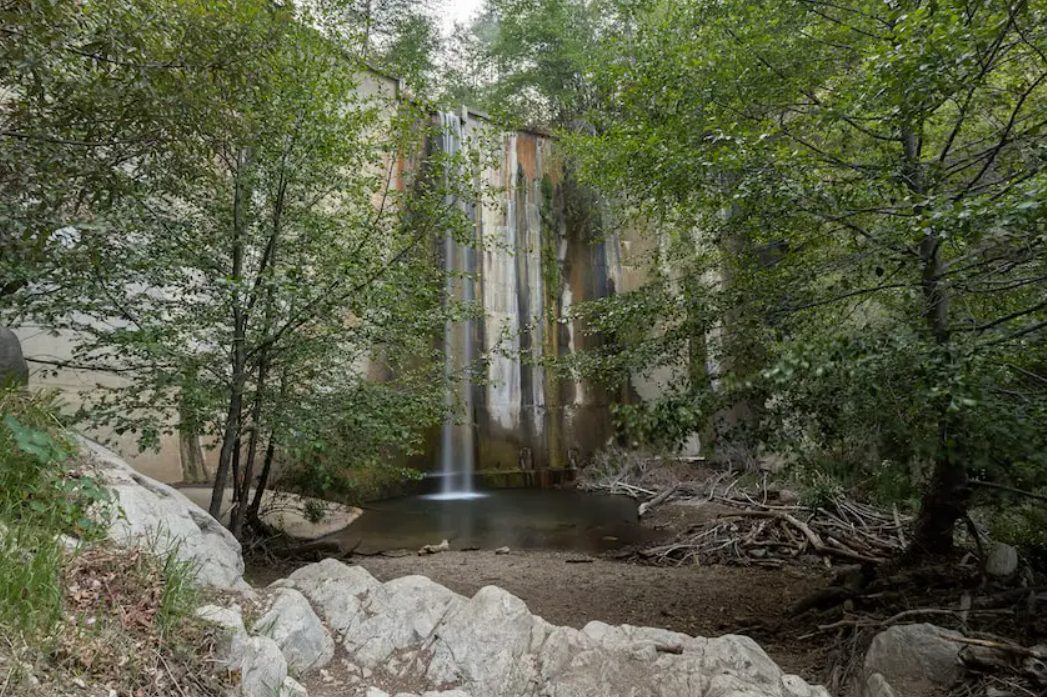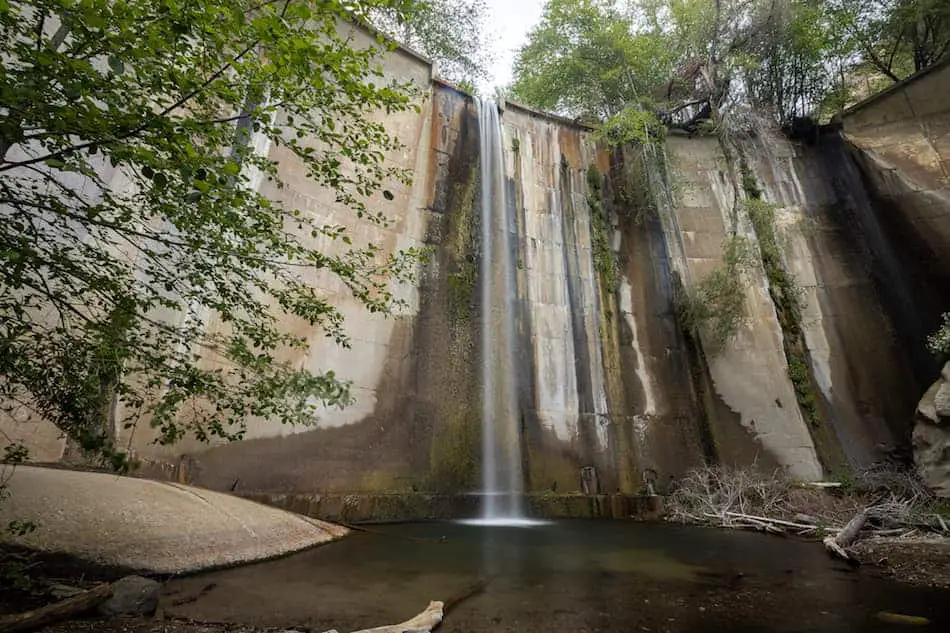Nestled amidst the rugged beauty of the San Gabriel Mountains, Brown Mountain Dam stands as a testament to human ingenuity and its harmonious coexistence with nature. Often overshadowed by its flashier counterparts, this unassuming dam holds a rich history, provides a haven for outdoor enthusiasts, and plays a vital role in the Los Angeles River ecosystem.
Contents
A Dam Steeped in History|From Wartime Necessity to Recreational Hotspot

Construction of Brown Mountain Dam began in 1943, during the height of World War II. The United States Forest Service embarked on the Los Angeles River Watershed Program, recognizing the urgent need for flood control and water conservation in the burgeoning city of Los Angeles. Brown Mountain Dam, strategically located in the Arroyo Seco Canyon, became the program’s first project [1].
Despite wartime resource constraints, the dam’s construction pushed forward. The resulting structure, though not monumental, proved remarkably effective. This “arch-buttress” dam, a unique design combining a curved wall with supporting pillars, blended seamlessly with the surrounding rock formations. This obscured its presence from casual observers on the Angeles Crest Highway, earning it the nickname “The Invisible Dam” [2].
Following the war, Brown Mountain Dam transitioned from wartime necessity to a recreational hub. The dam itself doesn’t offer much in terms of direct activities, but its role as a source of the Brown Mountain Dam Waterfall transformed the area. The cascading waterfall, formed by the release of controlled water from the dam, became a major draw for hikers, mountain bikers, and nature enthusiasts [3].
Hiking Adventures|Unveiling the Beauty of Brown Mountain Dam

Reaching the Brown Mountain Dam Waterfall presents hikers with two distinct options. The shorter, more challenging route offers a direct 2-mile ascent, rewarding hikers with breathtaking views and a quicker arrival at the falls. For those seeking a more leisurely experience, a longer 8.4-mile trail exists. This route incorporates a portion of the famed Gabrielino Trail, offering a gradual incline and showcasing the diverse flora and fauna of the region [4].
The Brown Mountain Dam Trail caters to a variety of skill levels. The well-maintained path is suitable for casual hikers, while the steeper sections provide a challenge for more experienced adventurers. Mountain bikers also frequent the trails, enjoying the scenic route and the opportunity to test their skills. Leashed dogs are welcome, adding to the overall appeal for outdoor enthusiasts seeking a nature escape with their furry companions [5].
The Brown Mountain Dam Waterfall itself serves as the crown jewel of the hike. The cascading water creates a refreshing ambiance, particularly during the warmer months. A small pool at the base of the falls offers a tempting spot to cool down after the trek, although visitors are advised to exercise caution around the slippery rocks [6].
Beyond the waterfall, the area surrounding Brown Mountain Dam boasts additional attractions. The Ken Burton Trail, a short offshoot from the main trail, leads to a scenic overlook with panoramic vistas of the valley below. For those seeking a longer adventure, the Gabrielino Trail continues its path onwards, offering access to further hiking opportunities within the Angeles National Forest [7].
Ecological Significance|A Guardian of the Los Angeles River Watershed

While recreation remains a major draw, Brown Mountain Dam’s primary function lies in its role as a guardian of the Los Angeles River watershed. The dam regulates the flow of water in the Arroyo Seco, a vital tributary of the Los Angeles River. This controlled release prevents flash flooding downstream, protecting communities and infrastructure in the Los Angeles basin [8].
Furthermore, the dam contributes to water conservation efforts. By capturing winter runoff, Brown Mountain Dam helps replenish groundwater supplies, a crucial resource in the arid Southern California climate. The controlled release of water also helps maintain healthy habitats for native plant and animal life within the river ecosystem [9].
A Balancing Act|Recreation, Conservation, and the Future of Brown Mountain Dam
The popularity of Brown Mountain Dam creates a unique challenge – balancing recreational activities with the dam’s ecological importance. Increased foot traffic can lead to erosion and damage to the surrounding ecosystem.
To address these concerns, responsible recreation is key. Hikers and mountain bikers should stay on designated trails to minimize their impact. Proper waste disposal is essential to keep the area clean and prevent pollution of the downstream water sources [10].
The managing authorities also play a crucial role. Regular maintenance of the trails ensures safe passage for visitors while minimizing damage to the environment. Educational signage can raise awareness about the dam’s ecological significance and encourage responsible behavior among visitors [11].
Looking ahead, Brown Mountain Dam is poised to remain a hidden gem within the Los Angeles area. By fostering responsible recreation and prioritizing conservation efforts, this historic landmark can continue to provide a haven for outdoor enthusiasts while safeguarding the health of the Los Angeles River ecosystem for generations to come





